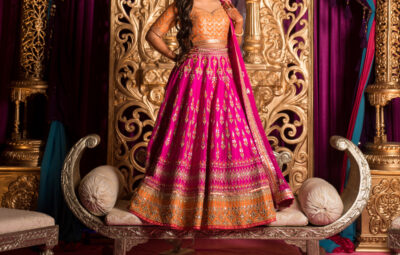Belts make a huge statement in your wardrobe. Being able to create the perfect belt that highlights your personality and style by embroidering your own designs can set your belt apart from those of other people.
Adding embroidery designs can help renew old belts and give them an updated look as well as a new life within your wardrobe.
Although creating your own designs may seem like a hard process, it’s fairly straightforward and simple once you know what to look for.
Here we will be going over the various types of leather stitching so that you can create the perfect look for your belt.
How Is Leather Stitched?
You can stitch leather in various ways. Because this material is tough to work with in thicker widths, you have to create a guide and premake holes for your needle to work through. This will require you to have a few more tools than just your simple needle and thread.
If you’re starting from scratch you may have to also treat and glue the leather before you begin stitching. You can add stitches to pre-existing leather belts to amp up their flair, and add a personal touch to your style.
Leather stitching uses a thicker thread than normal sewing would usually use. This is to ensure that your leather stitches not only hold the leather together but hold up over time as well.
The best leather belt to use for embroidery is one that is high quality and doesn’t have any pre-existing designs on it. This way you can fully customize the belt to your liking without competing with other designs.
Types of Leather Stitching
There are many ways to stitch leather, however, if you’re working with belts that are often made of thick leather, these stitches will be the easiest for your decorative leather stitching.
A common stitch in basic embroidery, the stem stitch is a good stitch to start with. This stitch is created by stitching in a straight line with your stitches slightly overlapping the next stitch. The stem stitch is a great stitch to use when creating patterns that are made out of simple lines.
The herringbone stitch is another stitch that adds detail while remaining simple. The herringbone stitch is characterized by the ends of the stitches crisscrossing while the direction of the stitch alternates to create the iconic zigzag pattern.
If you want to create a design along the edge of your belt, the whip stitch is a great stitch to learn. The whip stitch wraps around the edges of the leather to create a striped look along the leather.
This is a classic stitch to use in leatherwork and provides a nice contrast when using a colored thread that compliments the color of your belt.
The straight stitch is a stitch that everyone uses in sewing leather and fabric. The straight stitch can be used for lots of designs that you might have in mind. This stitch is characterized by its basic stitches that follow closely behind one another to create a straight line.
Should You Hand Stitch or Machine Stitch?
While you can machine stitch leather with a sewing machine that can handle the toughness of leather, hand sewing is often the better option for decorative stitches.
Hand sewing allows you to have more control over the look, quality, and placement of stitches than machine sewing does. Sewing by hand often creates stronger stitches that won’t fall apart as easily as a machined stitch can.
Hand sewing is also easier if you’re new to sewing with leather since learning how to work with a sewing machine can take time to build up your skills.
Make Your Perfect Belt Today!
Embroidering your belt is a great way to try your hand in designing a fashion piece that means something to you personally.
Whether looking to vamp up an old belt or enhance a brand new one, adding different types of leather stitching to your belt is a great way to show off your style.
If you enjoyed this article, be sure to check out our other posts in fashion and clothing for more on ways to add to your collection.








